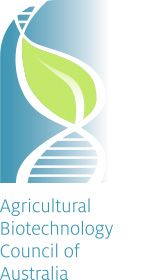A Tale of Two GMO Transplant Techniques
12 November 2014 Source: http://magazine.good.is/articles/transgenic-vs-cisgenic-gmo
Ever since scientists announced they could place functional foreign genes into plant cells some 30 years ago, people have been arguing about the pros and cons of genetically modified crops. On one hand, GM crops produce larger, heartier yields, and could help solve the world’s food shortage problem. On the other, something about eating a tomato whose genes have been tampered with can be a little unsettling and, well, unnatural.
Not that the biotech industry has been paying much attention to consumer’s unease. Almost as soon as scientists announced that plants could be genetically altered to suit human needs, companies began scrambling to create new, modified organisms as quickly and efficiently as possible. In the last 15 years, herbicide-tolerant and pest-resistant crops have become the standard in the United States and a handful of other Western countries, and have almost entirely replaced conventional planting methods. (Europeans have displayed slightly more skepticism in this regard—GM crops remain banned in many EU countries.) …
Two of the techniques for transplanting genes are transgenesis and cisgenesis. Both involve introducing one or more genes into a plant. However, cisgenesis involves only genes from the same species or a cross-compatible species, a process that could otherwise happen—though over a considerably longer period of time—through breeding or other natural methods. Transgenesis, however, combines genes between unrelated species in a way that could never happen on its own. Like cold-water fish genes, which have been inserted into strawberry plants to prevent the fruit from freezing. Obviously there is a reluctance to accept GM foods that have been created with transgenesis rather than cisgenesis, because these are viewed as ‘unnatural’.
However, while both are used in what are called “genetically modified” crops, there is no way to tell which GM foods have been created via transgenesis versus cisgenesis, as international GMO regulations do not discriminate between the two methods. Recent research into these two techniques suggests that both are, scientifically speaking, safe and acceptable means to creating GM crops. However, a wider implementation of cisgenic techniques could ease anxieties about transgenesis and lead to increased consumer acceptance. “There is reasonable evidence that consumers are more comfortable with the use of genes from within the same species than transgenes. However, future developments regarding the generation and commercialization of cisgenic crops will depend on application of less stringent regulation to these crops worldwide,” a 2013 report on the techniques concluded.

